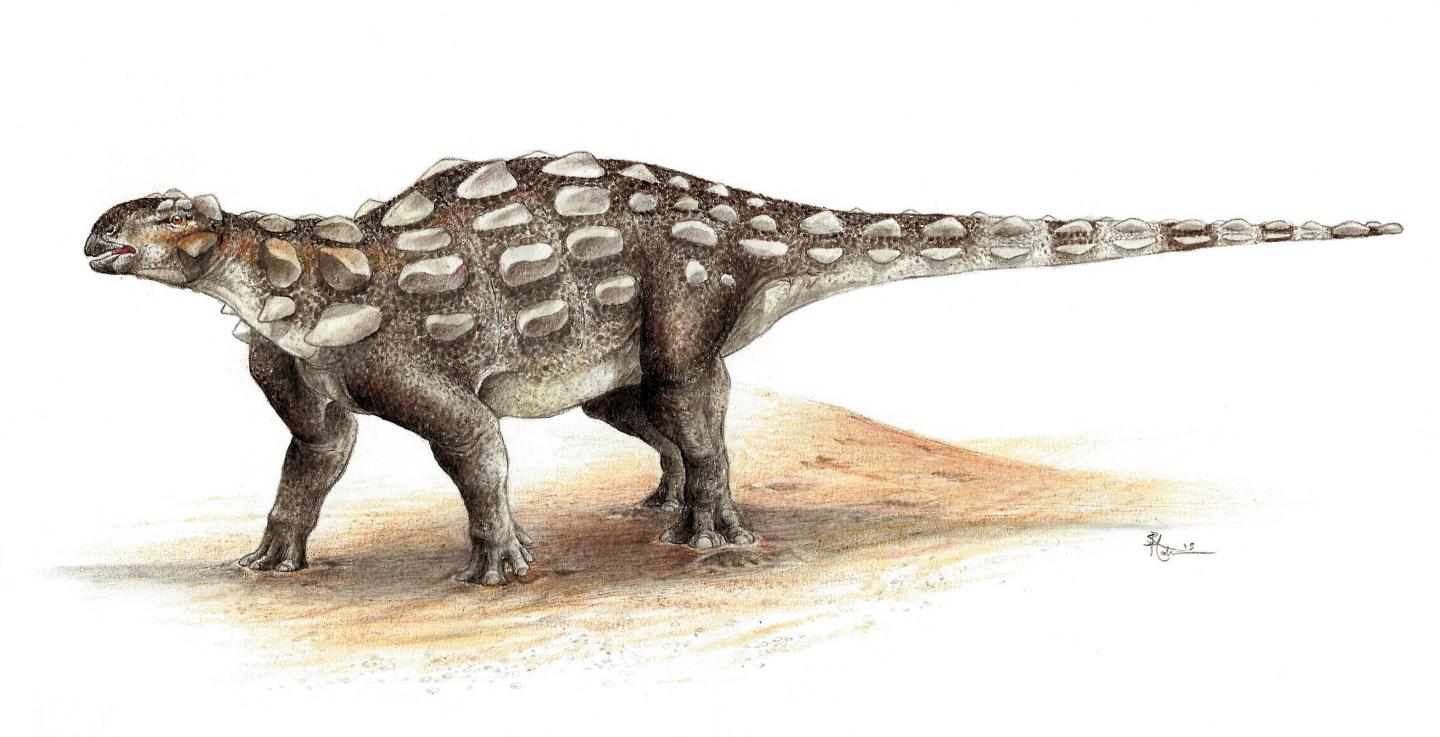
Life illustration of Gobisaurus, an ankylosaur with a stiff tail but no knob of bone at the end. How did the ankylosaur get its tail club? According to research from North Carolina State University and the North Carolina Museum of Natural Sciences that traces the evolution of the ankylosaur's distinctive tail, the handle arrived first on the scene, and the knot at the end of the tail followed.
The typical ankylosaur had a wide armored body and a flexible tail. But one group of ankylosaurs - ankylosaurids - also had a tail club that could have served as a useful weapon. These "weaponized" ankylosaurids lived about 66 million years ago, during the Cretaceous period. But ankylosaurian dinosaurs were around well before that time - over 145 million years ago, during the Jurassic.
Victoria Arbour, a postdoctoral researcher at NC State and the North Carolina Museum of Natural Sciences, was a Ph.D. candidate at the University of Alberta when she began studying how the ankylosaur developed its unique tail. In a paper published in the Journal of Anatomy, Arbour compared Jurassic ankylosaur specimens to those from the early and late Cretaceous period, tracing the tail's evolution from flexible to fearsome.
An ankylosaur's tail is composed of a handle and a knob. The knob is made up of osteoderms, a special kind of bone formed in the skin that's unique to armored dinosaurs. The handle is the lower portion of the tail which supports the knob.
"In order for an ankylosaur to be able to support the weight of a knob and swing it effectively, the tail needs to be stiff, like an ax handle," says Arbour. "For that to occur, the vertebrae along the tail had to become less flexible, otherwise the momentum generated by the knob's weight could tear muscle or dislocate vertebrae."
Arbour looked at a number of early ankylosaurids including: Liaoningosaurus which lived 122 million years ago; Gobisaurus, which lived 90 million years ago; and Pinacosaurus, which lived 75 million years ago and is the earliest specimen with a complete tail club, to determine which of three possible evolutionary paths was most likely.
"There are three ways the tail could have evolved," Arbour says. "The knob could have evolved first, in which case you'd see ankylosaurids with osteoderms enveloping the end of the tail, but with the tail remaining flexible. The handle could have evolved first, meaning you would see early ankylosaurids with overlapping or fused tail vertebrae. Or the knob and handle could have evolved in tandem, in which case you'd see ankylosaurids with both structures, but there could have been other differences like shorter handles or smaller knobs."
By comparing the tails of the specimens, Arbour saw that by the early Cretaceous, ankylosaurs had begun to develop stiff tails with fused vertebrae. The knob appeared in the late Cretaceous.
"While it's possible that some of the species could still have developed the handle and knob in tandem, it seems most likely that the tail stiffened prior to the growth of the osteoderm knob, in order to maximize the tail's effectiveness as a weapon," Arbour says.
Source: North Carolina State University
 Print Article
Print Article Mail to a Friend
Mail to a Friend
